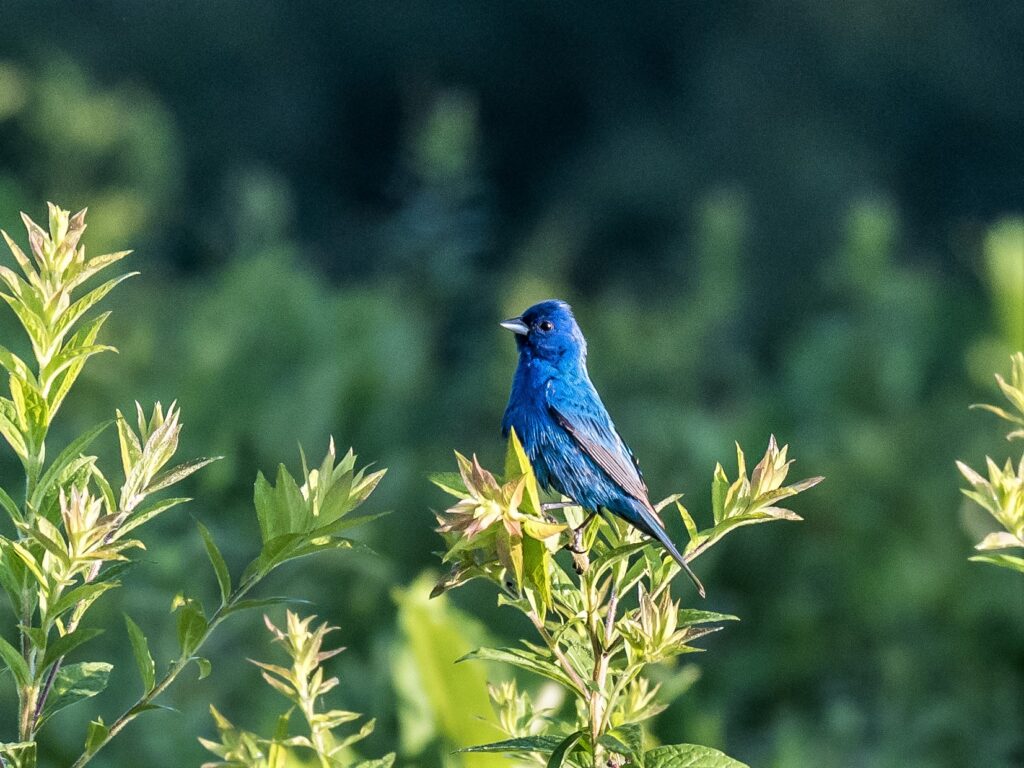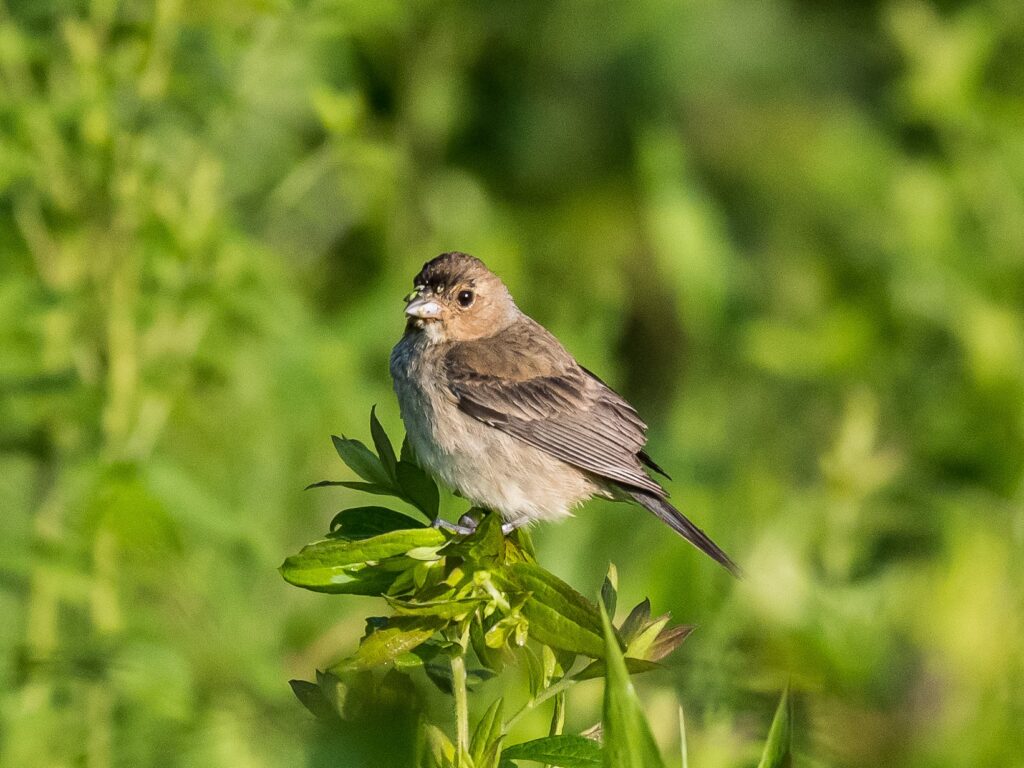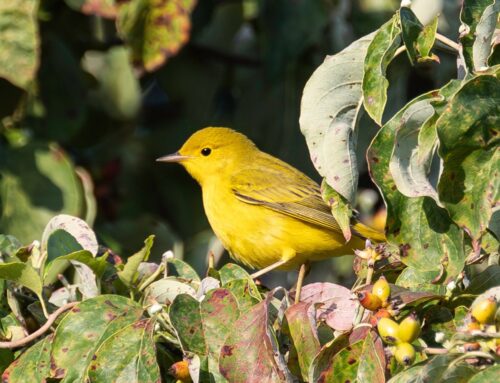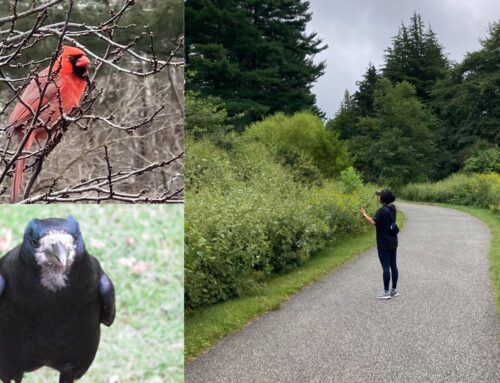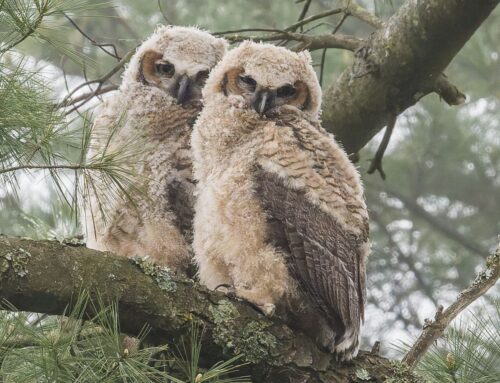The sight of a sky-blue Indigo Bunting never fails to thrill the crowd on the weekly bird walks at Tyler. It can be hard to take your eyes off an adult male perched in good light as it sings its heart out. However, many new birders who attend our walks have never heard of an Indigo Bunting and are surprised that such a gem is so common in the Arboretum during spring and summer.
An adult male Indigo Bunting is almost entirely deep cobalt blue, a sight to behold, especially when seen in full sun. Males show a variable amount of dark brown in their tails and wings. Females and juvenile birds are brown; a light attractive brown to my eye. Adult females may show a little blue on their shoulders, rump, and tail.
Surprisingly, like all bird species that show blue, the striking color of an adult male Indigo Bunting does not come from blue pigment. Their feathers contain only melanin, which is a brown/black pigment. The microstructure of the feathers that a male Indigo Bunting sports in breeding season allow the feathers to absorb all but blue light. The unabsorbed blue is reflected in the observer’s eyes. It is the same principle that makes our sky blue. Alas, male Indigo Buntings molt to a brown color in the fall, similar to that of females and juveniles, because the new feathers have a different microstructure that absorbs, rather than reflects, blue light.
Males sing well into the summer until their second brood is out of the nest. They repeatedly sing for several minutes at a time from each perch, moving from one perch to another within their territory. They sing from the early morning into the mid-day hours, which is past the time when many other birds have become quiet.
Indigo Buntings live among the shrubs and tall grasses of weedy areas. They build their nest in the crotch of branching low shrubs and herbs, usually no more than three feet off the ground. They can be found almost anywhere except far into the woods at Tyler. In breeding season, Indigo Buntings feed on calorie-rich insects, spiders, and other bugs, as well as the grasses and herbs on which they feed year-round. The shift from eating primarily vegetation to insects is common in the bird world as “bugs” provide the concentrated calories necessary for the rigors of breeding and upcoming fall migration. An author writing about Indigo Buntings notes, “(T)heir colorful appearance and cheerful songs are good reasons to fallow old fields and to spare (not spray) herbicides along railways and roads.”
Indigo Buntings breed in the eastern United States, from Florida to southernmost Canada. Some breed in the southwest desert states. They winter in Mexico, Central America, the Caribbean, and northernmost South America and return to breed within a couple of miles of the territory where they were born.
How do you find an Indigo Bunting at Tyler? Look anywhere in the meadows or the surrounding trees. They are finch-sized birds, a size or two smaller than the similarly colored but roughly robin-sized bluebirds at Tyler. Besides size, the male Indigo Buntings can be distinguished from bluebirds by their almost entirely blue color, which contrasts with the robin-like red breast of bluebirds. Familiarizing yourself with the song of the Indigo Bunting is very helpful in finding them. Look anywhere from a few feet up in the shrubs and grasses to 30 feet high in a nearby tree.
A close look with binoculars allows you to appreciate their beauty fully. So listen to an Indigo Bunting song recording, grab your binoculars, visit Tyler Arboretum, and get a look at them!
For more information, photos and sound recordings of Indigo Buntings, check out this site from the Cornell Laboratory of Ornithology: https://www.allaboutbirds.org/guide/Indigo_Bunting


